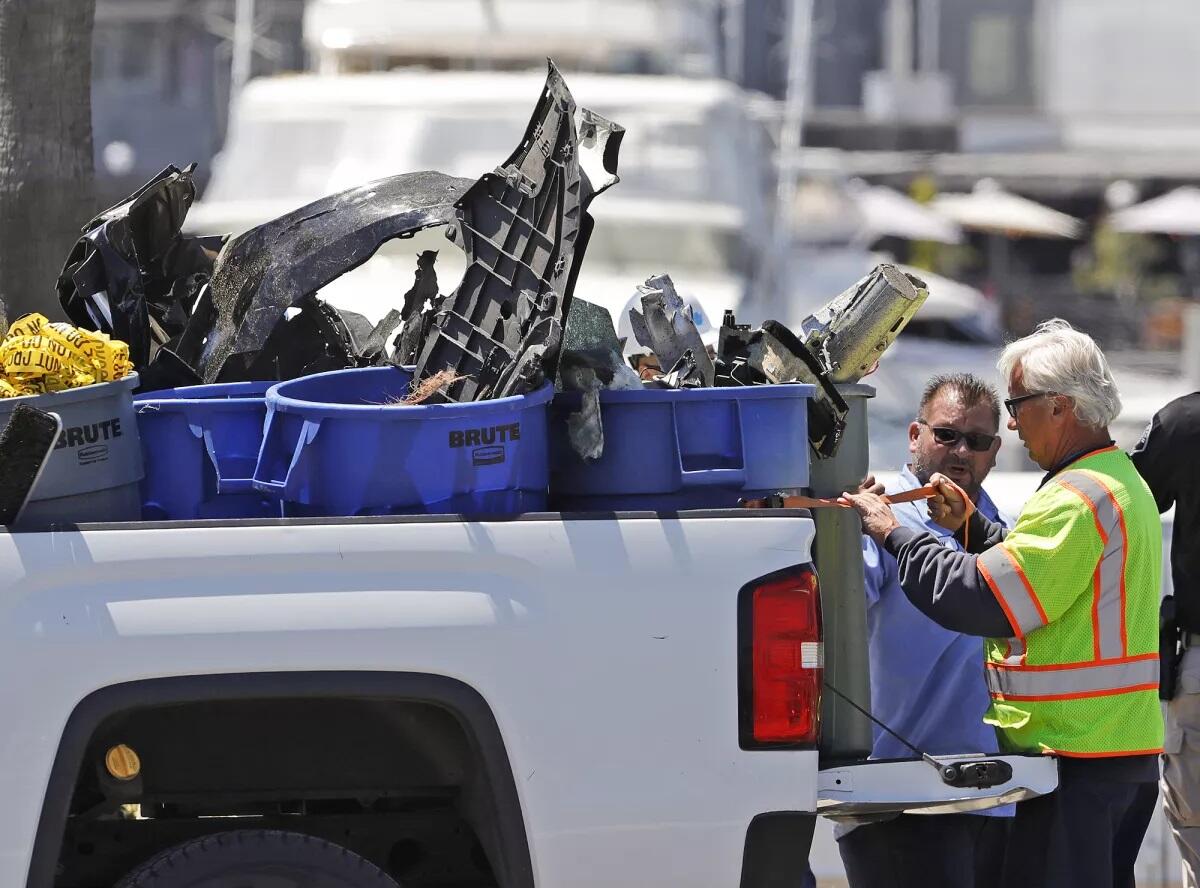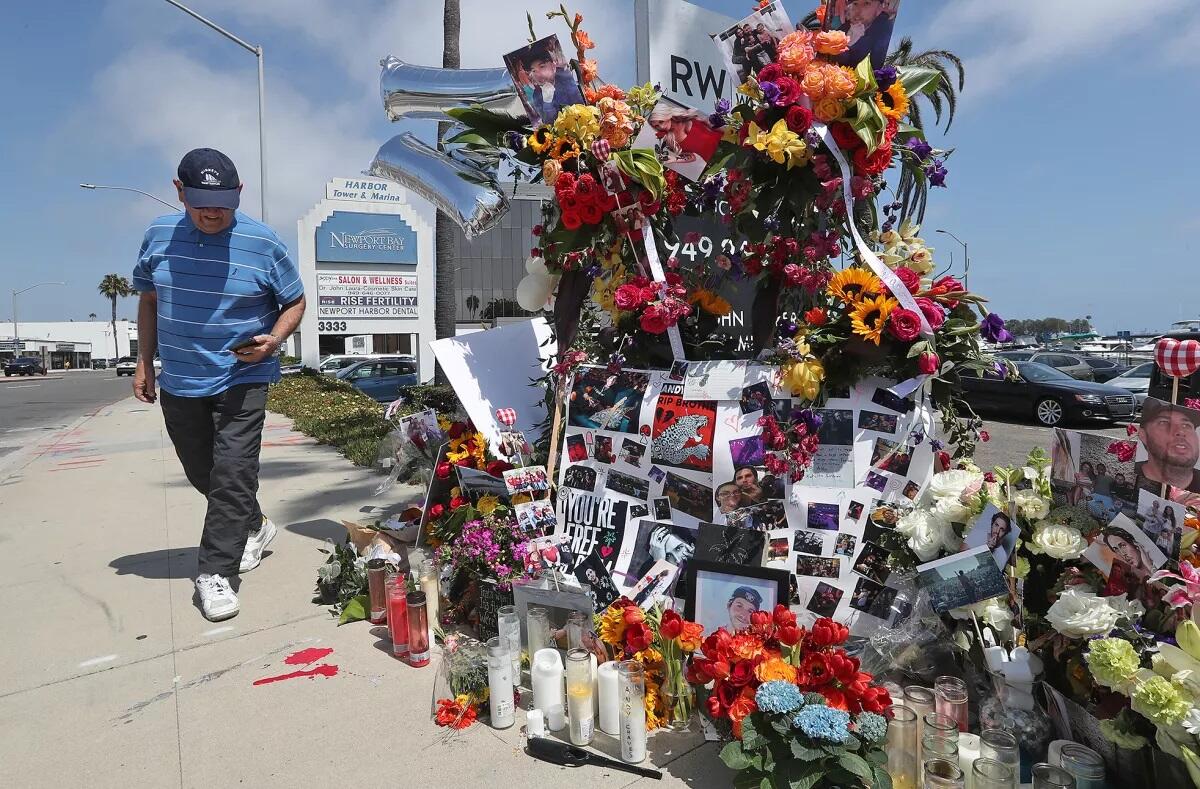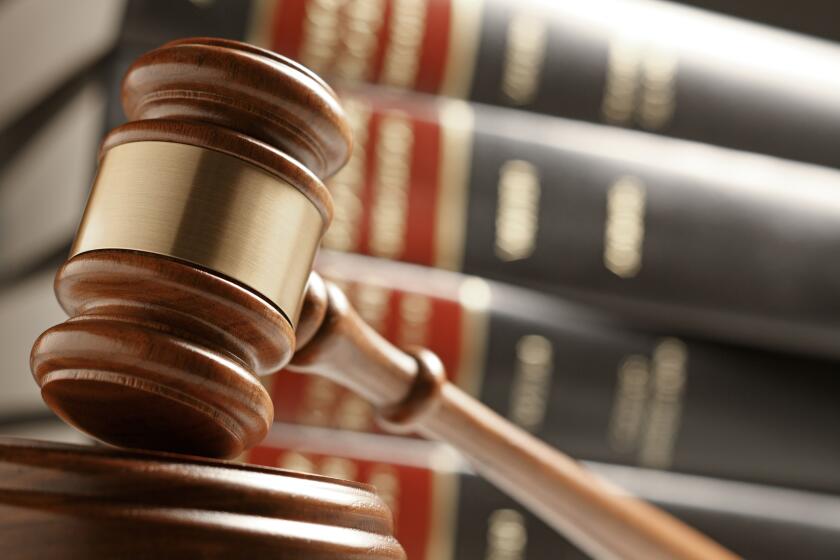Autopilot was not engaged in 2022 Tesla Model S crash that killed 3 in Newport Beach

- Share via
On May 12, a Tesla Model S Plaid traveling “in great excess of the speed limit,” slammed into construction equipment at about 12:45 a.m. on Pacific Coast Highway, between Old Newport Boulevard and Riverside Avenue, Newport Beach Police Lt. Eric Little said.
Crystal McCallum, 34, of Texas, Andrew James Chaves, 32, of Arizona, and Wayne Walter Swanson Jr., 40, were killed in the crash. Three people working at the scene were injured.

The crash happened as questions were being raised about the safety of self-driving cars. The Newport Beach collision was one of 34 involving such technology that had been reported to the National Highway Transportation Safety Administration since 2016. Of those, 28 involved Teslas.
It became one of the cases examined in an NHTSA probe into the reliability of autopilot-like features, and the focus of widespread media attention. Newport Beach police’s MAIT team worked closely with the federal agency, Tesla and other local agencies to learn what they could about the moments leading up to the tragedy.
After examining data recorded by the Model S’s onboard computer, investigators learned that its driver assist function was not activated during the crash, and the vehicle was under its driver’s control at the time, Little said.
As of Friday, authorities believe alcohol or drugs and speeding were the main factors behind the incident.
The painstaking collection of clues at the scene
Everyone hates traffic jams, especially the people tasked with investigating the crashes often at the heart of them, Little said. That’s not just because they get a lot of the blame for the holdup.
“It inconveniences people when they’re on the road and there’s a road closed for several hours,” the lieutenant overseeing NBPD’s Major Accident Investigation Team said. “And I know how frustrating that can be. But, again, we’re working as quickly as we can while being as careful as we can to make sure we’re not compromising the investigation.”
For police and forensic experts, that can mean tracking down evidence strewn across a roadway, interviewing freshly traumatized people or recording precise data about skid marks and other scars left by a collision. And, in cases where people are hurt or killed, they’re forced to see the human toll of a crash.
“It is challenging for our team to go out and deal with a loss of life as frequently as they do,” Little said. “It’s a traumatic event for everybody, and often we see stuff at collision scenes that most people shouldn’t see.”
They do it because survivors and relatives of those killed want answers, Little said. Survivors oftentimes want to find out as much as they can about how and why their lives were turned upside down. And authorities must also determine who might have been responsible.
“People want some closure to these incidents, and here you had the loss of three lives,” Little said of the Tesla’s crash. “With how tragic this was, it was important to provide a complete, thorough investigation for their loved ones while not speculating on the nature of the crash.”
As many as 31,785 were killed in the U.S. in just the first nine months of 2022, according to early statistics released by the NHTSA. And in 2021, over 42,900 people died in traffic collisions nationwide. That figure represents more than a 10% jump over the previous year and is the highest tally recorded since 2005.
“We realize the inconvenience closing roads causes to the public,” Little said. “But at the same time, at the end of the day, we have to realize and appreciate that we’re still living and breathing. And if we have to detour for 10 or 15 minutes, fortunately we’re not the ones in that tragic situation.”
All the latest on Orange County from Orange County.
Get our free TimesOC newsletter.
You may occasionally receive promotional content from the Daily Pilot.




